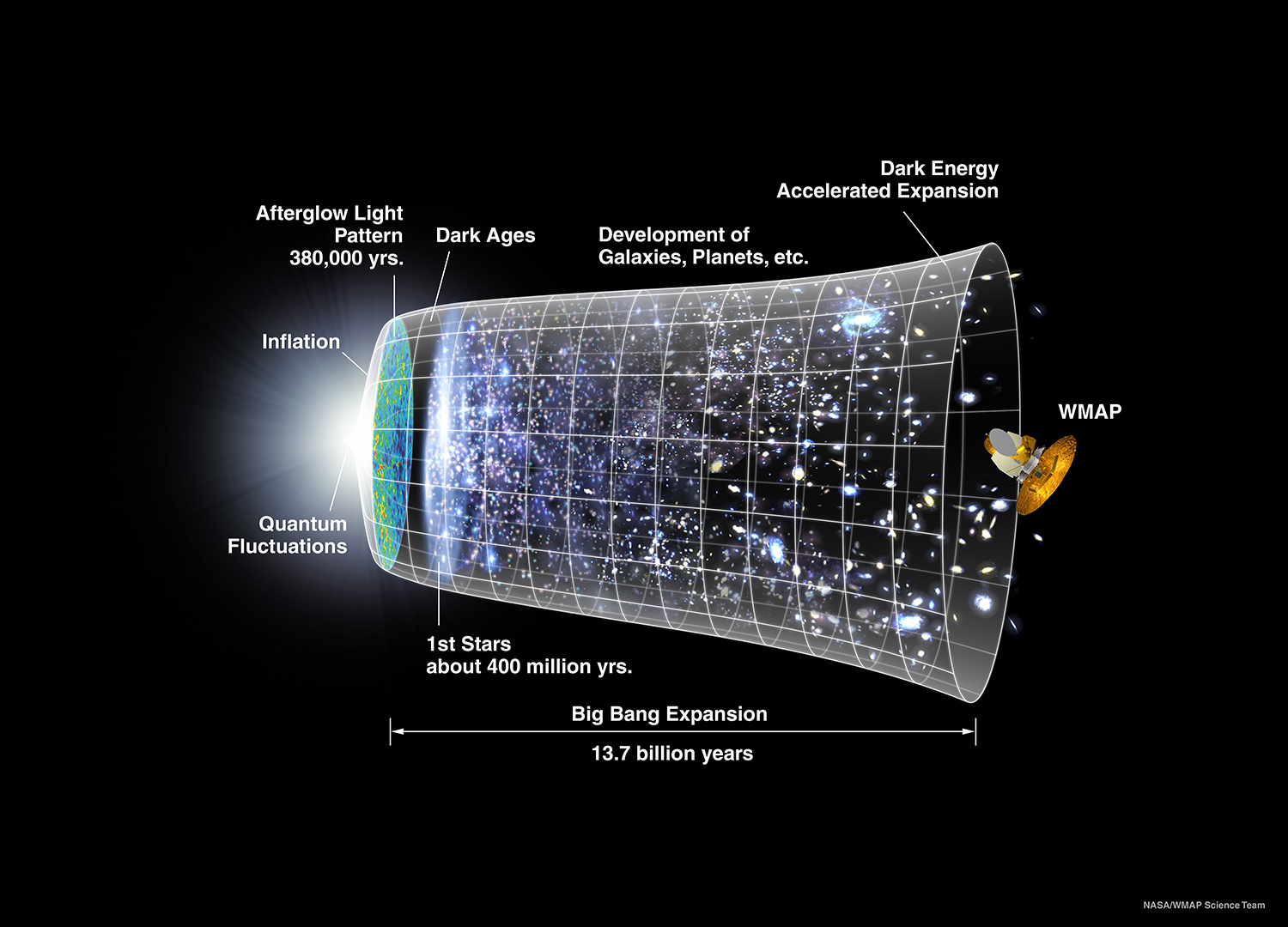Astro 103 - Lecture 26

 Lectures Lectures  |
Lecture page |
|

 Lectures Lectures  |
Lecture page |
|
 Early 20th century
Early 20th century
. . . Universe is static
. . . unchanging, not expanding
But then ...
 Einstein's field equations
Einstein's field equations

 Universe is expanding!
Universe is expanding!
. . . oops . . . add `cosmological constant:'

 Hubble (1930's):
Hubble (1930's):
Measures the expansion
Einstein claims cosmological constant was the biggest blunder of his life.
But recent evidence (1990's) indicates he might have been right after all!
Both assume a homogeneous, isotropic Universe
no center
every part looks the same (on average, i.e. over a large enough volume)
 Big Bang -
Big Bang -
expansion
evolution:
 Steady State -
Steady State -
no evolution
no beginning
no end
matter (Hydrogen) spontaneously created ``in between'' Galaxies
and invokes the fewest ``tooth fairies.''
 The microwave background
The microwave background
 Elemental Abundances
Elemental Abundances
A ``primordial'' composition of elements, formed in the early, hot phase of the Universe, before further processing via fusion in stellar cores and supernova explosions.
 Formation and evolution
of structure (galaxies, clusters)
Formation and evolution
of structure (galaxies, clusters)
- What about the ``Horizon Problem'' and the ``Flatness Problem'' ? (still an issue)
Needed: One more ingredient to Big Bang model
| Inflation! |
Bell Labs (ATT), New Jersey
T = 2.7 degress (K)
isotropic to 1 part in 105 (0.00001)
- Universe cooled during expansion.
- What we see today is this ``cooled'' radiation left over from the Bang.

But there are still some very substantial problems and questions not answered by the theory.
What isn't particularly healthy is the lack of a competing theory to question and challenge the status quo.
The Sun-centered theory was better than the Earth-centered one, but still left a few observations left unexplained.
(e.g. Mercury's orbit  General Relativity)
General Relativity)
(b) The Steady State Theory, erroneously.
(c) The Inflation Theory, correctly.
(d) The Earth-centered Theory, erroneously.
(e) The Theory of General Relativity, correctly.
(b) The theory of a static Universe could again gain wide-spread acceptance.
(c) There are still some observations and questions left unexplained and unanswered by the Big Bang theory.
(d) If we can't question the theory, it can't be right.
(e) The Big Bang must be questioned because the Steady State theory appears to better fit our observations.
 Lectures Lectures  |
Lecture page |
|